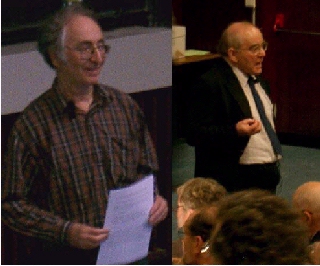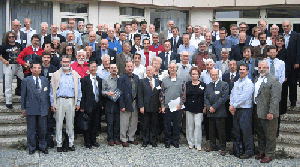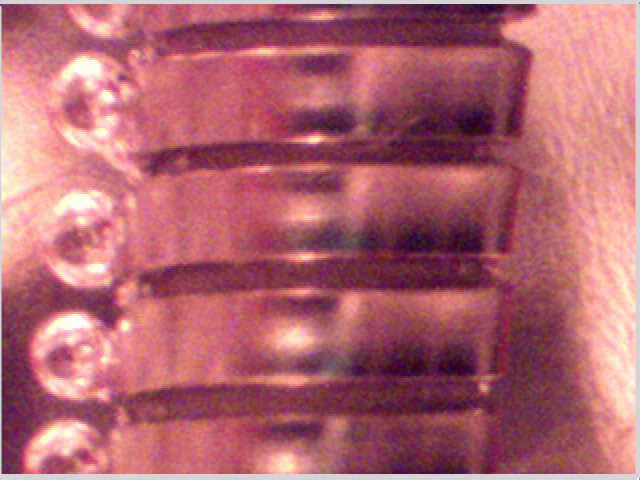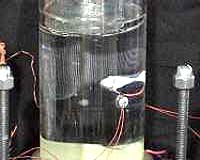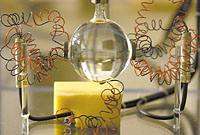 COLD FUSION TIMES
COLD FUSION TIMES
(fast loadingl page)
 COLD FUSION TIMES
COLD FUSION TIMES
(full page)
CF Introduction
Energy Production
CFT
Current Issue
CFT
Timeline
CFT
Index

CFT
References
CFT
Skeptics
CFT
Books

CF, Energy Links

General News Links

Science source Links
Software
Search Links
Subscribe
Educational
Offer

JET
Thermal
Products
JET ICCF10 Demo
JET References
|
Best viewed at 1280 x 1024 resolution.  Recent Visitors
Recent Visitors   Updated
April 11, 2005 Updated
April 11, 2005
MEETING ANNOUNCEMENT:
 The
2005 Cold Fusion Colloquium The
2005 Cold Fusion Colloquium
Cold Fusion - Science and Technology
also other Clean Energy Investigations
with Special Tribute to Dr. Eugene Mallove, Cold Fusion
Investigator, MIT Graduate
General Topics
Science and Engineering Discussions of Cold Fusion
Material Science, Review of Present literature concerning Cold Fusion
Experimental Results
Theoretical Understandings of Cold Fusion
Cold Fusion Device Engineering
Colloquium Schedule:
Saturday, 5/21/05, 9 AM to 4 PM Massachusetts Institute of Technology
Tentative Program and Pre-registration
Information
|
Welcome to COLD FUSION TECHNOLOGY
Web site
Your very best on-line and periodical
published source of scientific information on cold fusion and some similar
clean alternative energy systems.
Latest updates including IP (patent), business,
and environmental aspects of cold fusion (sometimes erroneously called
"low energy nuclear reactions" (LENR) or "chemically assisted nuclear reactions").
COLD FUSION TECHNOLOGY and SCIENCE
UPDATES for 2005 - Latest information Available
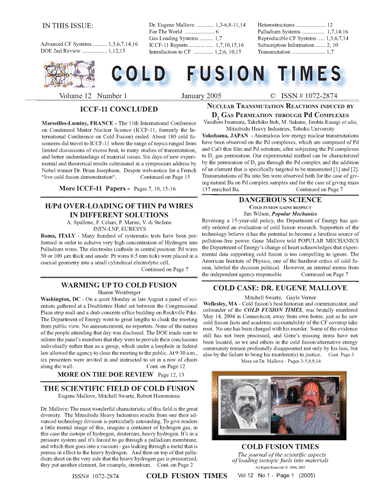
COLD FUSION TIMES Vol
12, Number 1 Winter
2005 Issue
(click page to see an enlargement
of page 1, and more information)
Many more Theoretical and Experimental Reports - Breakthroughs and
News YOU WILL USE
Material Science and Nuclear Physics involving Palladium, Nickel,
Titanium, and More
Cold Fusion Engineering and Up-to-date R&D, Advanced Cold Fusion
Systems, Other Technical Reports
|
 OPTION
FOR A FASTER-LOADING OPENING PAGE - Thank you for coming to this website
which is undergoing updates. This page is shorter FASTER-LOADING
version of the entire opening page for this website. If you
want, or need, all of the older material from before 2004, justclick
here for the COLD FUSION TIMES start page.
In both cases, you will have complete access to the entire COLD FUSION
TIMES website. OPTION
FOR A FASTER-LOADING OPENING PAGE - Thank you for coming to this website
which is undergoing updates. This page is shorter FASTER-LOADING
version of the entire opening page for this website. If you
want, or need, all of the older material from before 2004, justclick
here for the COLD FUSION TIMES start page.
In both cases, you will have complete access to the entire COLD FUSION
TIMES website.
Lastest on Lattice-Assisted
Cold fusion
[Classical cold fusion, similar
to that announced on March 23, 1989]
Cold Fusion is very important. Why? For example, check
out Popular Science (3/05), and read more below
Warning:
The Hydrogen Economy May Be More Distant Than It Appears -
Michael Behar
Popular
Science 3/2005
In presidential campaign of 2004, Bush and Kerry managed to
find one piece of common ground: Both spoke glowingly of a future powered
by fuel cells. Hydrogen would free us from our dependence on fossil fuels
and would dramatically curb emissions of air pollutants, including carbon
dioxide, the gas chiefly blamed for global warming. The entire worldwide
energy market would evolve into a “hydrogen economy” based on clean, abundant
power. Auto manufacturers and environmentalists alike happily rode the
bandwagon, pointing to hydrogen as the next big thing in U.S. energy policy.
Yet the truth is that we aren’t much closer to a commercially viable hydrogen-powered
car than we are to cold fusion or a cure for cancer.
HYDROGEN IS AN ABUNDANT FUEL
True, hydrogen is the most common element in the universe; it’s so
plentiful that the sun consumes 600 million tons of it every second. But
unlike oil, vast reservoirs of hydrogen don’t exist here on Earth. Instead,
hydrogen atoms are bound up in molecules with other elements, and we must
expend energy to extract the hydrogen so it can be used in fuel cells.
We’ll never get more energy out of hydrogen than we put into it. “Hydrogen
is a currency, not a primary energy source,” explains Geoffrey Ballard,
the father of the modern-day fuel cell and co-founder of Ballard Power
Systems, the world’s leading fuel-cell developer. “It’s a means of getting
energy from where you created it to where you need it.”
HYDROGEN FUEL CELLS WILL END GLOBAL WARMING
Unlike internal combustion engines, hydrogen fuel cells do not emit
carbon dioxide. But extracting hydrogen from natural gas, today’s primary
source, does. And wresting hydrogen from water through electrolysis takes
tremendous amounts of energy. If that energy comes from power plants burning
fossil fuels, the end product may be clean hydrogen, but the process used
to obtain it is still dirty. .... The result: even more C02. In fact, driving
a fuel cell car with hydrogen extracted from natural gas or water could
produce a net increase of CO2 in the atmosphere. ... In
the short term, nuclear power may be the easiest way to produce hydrogen
without pumping more carbon dioxide into the atmosphere. Electricity
from a nuclear plant would electrolyze water—splitting H2O into hydrogen
and oxygen. Ballard champions the idea, calling nuclear power “extremely
important, unless we see some other major breakthrough that none of us
has envisioned.”
In Japan, their Emperor has given
an award for the study of cold fusion.
The result in Japan: Science and engineering thrive.
By contrast, in America, the (hot fusion) physics community
and its conspirators at the US Patent Office continue to systematically
obstruct Yankee ingenuity, Congressional mandate, and US Constitutional
safeguards, in the very country were cold fusion was first announced in
March 1989 (on the day that the Exxon Valdez crashed in Alaska).
[Want more information on this? click here ]
The
Suppression of Inconvenient Facts in Physics - -
The
Cold Fusion Scandal - Rochus
Börner, Ph.D
"Such misrepresentation and falsification of evidence happened
after Stanley Pons and Martin Fleischman[5] announced in March 1989 that
they had achieved fusion by electrochemical means. Several influential
US laboratories (Caltech[6], MIT[7], Yale/Brookhaven[8]) reported negative
results on Cold Fusion that were based on shoddy experimental work and
a misunderstanding of the Pons-Fleischmann claims[9]. They gave a hostile
hot fusion establishment the excuse it needed to conclude that the claims
made by Pons and Fleischmann were bogus. In November 1989, a DOE panel
concluded the same after a shallow mock investigation of only seven months.[10]
Eugene F. Mallove, who was the Chief Science Writer at the MIT News Office
at the time and now publishes Infinite Energy, a journal dedicated to covering
potential new energy sources ignored by mainstream science, played a part
in exposing the MIT report as mistaken, possibly fraudulent[11], and resigned
in protest over it in 1991. ... It is ironic that each
of these negative results were themselves the product of the kind of low
quality work of which Fleischmann and Pons were accused. The difference
was that the reports said what the hot fusion community wanted to hear.
This was the legacy of the 1989 ERAB report, but that legacy must now be
reversed-and it will be, however long that takes.
Most people, including physicists continue to be unaware that low-energy
nuclear reactions (LENR) are real, and have been verified in hundreds of
experiments throughout the 1990s.
In February 2002, the Space and Naval Warfare Systems Center of the
United State Navy in San Diego released a 310 page report titled Thermal
and Nuclear Aspects of the Pd/D2O System [13] that discusses the overwhelming
experimental evidence that the cold fusion effect indeed exists. Dr. Frank
E. Gordon, the head of the center's Navigation and Applied Sciences Department,
writes in the foreword:
.That "cold fusion" continues to be ignored by the scientific establishment,
and, to add insult to injury, is being used synonymously with "bad science",
usually in such expressions as "the cold fusion debacle", constitutes one
of the greatest scientific scandals in human history, and a human tragedy.
While wars over oil are being fought, a potential source of energy that
could solve humanity's energy problems for all eternity is being ignored
by all but a small community of researchers. At the same time, the dead-end
"hot fusion" program continues to receive billions of dollars in public
funds. If there is a scandal associated with cold fusion, this is it."
COLDFUSION REFERENCES AND LINKS
 Cold Fusion Times References
(UPDATED)
Cold Fusion Times References
(UPDATED)
Cold Fusion Times Cold Fusion Links
Dr. Britz Papers
(missing conference, JNE, etc)
Lietz
References
Free
Energy News Directory
'LENR site' References
JET Thermal Products 
JET Thermal Products
(Introduction including Cold
Fusion Engineering, including the Optimal Operating Point)
 JET Thermal Products - Introduction to Cold Fusion
JET Thermal Products - Introduction to Cold Fusion
Cold Fusion Science -
More Engineering and material science
JET Thermal
Products - Public Open-House Cold Fusion Demonstration at MIT and
ICCF10
More information about
JET Thermal Products
|

COLD FUSION TIMES "Your
Most Complete, Uncensored, Cold Fusion Resource"

The journal of the scientific aspects of loading isotopic
fuels into materials
ISSN# 1072-2874 Published Quarterly ©2005
JET Technology
Lastest on Sonofusion
Collapsing
bubbles have hot plasma core - Mark Peplow
Nature:
2 March 2005
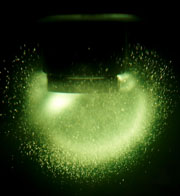
Ken Suslick and David Flannigan, chemists from
the University of Illinois at Urbana-Champaign, say they have recorded
the most intense flashes of light ever seen from these bubbles, visible
to the naked eye, which has allowed them to probe what happens inside.
"Nobody has been able to measure the temperature inside a single collapsing
bubble before," says Suslick. The bubbles reached more than 15,000°C
he says, which is four times hotter than the surface of the Sun.
Brutal
Bubbles: Collapsing orbs rip apart atoms - Peter Weiss
Science News March 5, 2005; Vol. 167, No. 10 , p. 147

Fill a flask with liquid, rattle it with ultrasonic waves,
and hellish microcosms can form within the fluid. Tiny gas bubbles swell
and then implode with a fury now revealed to be extreme enough to strip
electrons from atoms trapped in the collapse. The Illinois chemists
who have detected that atomic destruction for the first time have also
directly measured temperatures of the imploding bubbles. Some of these
register at least 15,000 kelvins, a temperature about three times as hot
as the Sun's surface.
 Shrimps spew bubbles as hot as the sun - Peter Weiss
Shrimps spew bubbles as hot as the sun - Peter Weiss
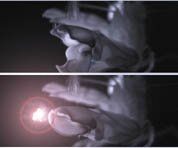
Pinkie-size marine crustaceans whose snappy noisemaking has
already captivated scientists also stage some flashy pyrotechnics, researchers
now find. While earlier experiments had shown that so-called snapping shrimp
generate imploding air bubbles that make loud popping sounds (SN: 9/23/00,
p. 199), a new study reveals that those collapsing bubbles emit flashes
of light and may flare as hot as the sun's surface.
Star
in a Jar? Hints of nuclear fusion found—maybe - Peter Weiss
A group of scientists claims to have found evidence of nuclear fusion in
a vase-size flask of liquid. The researchers say they created tiny bubbles
that seemed to have collapsed with enough violence to force atomic nuclei
to fuse.
Plasma
formation and temperature measurement during single-bubble cavitation
- Flannigan, Suslick
Nature
434, 52 - 55 (03 March 2005)
Single-bubble sonoluminescence (SBSL) results from the extreme
temperatures and pressures achieved during bubble compression; calculations
have predicted the existence of a hot, optically opaque plasma core with
consequent bremsstrahlung radiation. Recent controversial reports claim
the observation of neutrons from deuterium–deuterium fusion during acoustic
cavitation. However, there has been previously no strong experimental evidence
for the existence of a plasma during single- or multi-bubble sonoluminescence.
SBSL typically produces featureless emission spectra that reveal little
about the intra-cavity physical conditions or chemical processes. Here
we report observations of atomic (Ar) emission and extensive molecular
(SO) and ionic (O2+) progressions in SBSL spectra from concentrated aqueous
H2SO4 solutions. Both the Ar and SO emission permit spectroscopic temperature
determinations, as accomplished for multi-bubble sonoluminescence with
other emitters. The emissive excited states observed from both Ar and O2+
are inconsistent with any thermal process. The Ar excited states involved
are extremely high in energy (>13 eV) and cannot be thermally populated
at the measured Ar emission temperatures (4,000–15,000 K); the ionization
energy of O2 is more than twice its bond dissociation energy, so O2+ likewise
cannot be thermally produced. We therefore conclude that these emitting
species must originate from collisions with high-energy electrons, ions
or particles from a hot plasma core.
Temperature
inside collapsing bubble four times that of sun - Spaceref.com
3 March 05
Using a technique employed by astronomers to determine stellar
surface temperatures, chemists at the University of Illinois at Urbana-Champaign
have measured the temperature inside a single, acoustically driven collapsing
bubble.
"When bubbles in a liquid get compressed, the insides
get hot -- very hot," said Ken Suslick, the Marvin T. Schmidt Professor
of Chemistry at Illinois and a researcher at the Beckman Institute for
Advanced Science and Technology. "The temperature we measured -- about
20,000 degrees Kelvin -- is four times hotter than the surface of our sun."
By substituting concentrated sulfuric acid for the water used in previous
measurements, Suslick and Flannigan boosted the brilliance of the spectra
nearly 3,000 times. The bubble can be seen glowing even in a brightly lit
room. This allowed the researchers to measure the otherwise faint emission
from a single bubble.
Want more information on sonofusion? Click
here
|
|
|
|
|
|
|
|
|
|
|
|
|
| |
|
Beyond
the horizon of humdrum - Jug Suraiya, Vikas Singh
INDIA
TIMES NEWS NETWORK
Fuel Free-for-all
INDIA - "Imagine .having your own private sun supply all the
bijli you'll ever need. That's the promise of cold fusion — giving humankind
an inexhaustible, limitless source of virtually free, non-polluting energy.
It would revolutionise the way we live. No more soaring oil prices. No
pollution. No petro-funded terrorism. The problem is that cold fusion has
largely been dismissed as a chimera — a golden goose that can never be.
Cold fusion — harnessing nuclear energy without recourse to the humungous
temperatures that conventional fusion entails — has long been the holy
grail of fringe science. Experimenters from Baltimore to Bangalore have
claimed success. (The lad from Karnataka said he'd achieved cold fusion
in his bathtub). All such claims have been disproved. But many — like us
— believe cold fusion is indeed possible. And will be made to happen, sooner
rather than later. So why not in 2005?"
UNDERNEWS
- Progressive Review- Sam
Smith
"AT THE MARCH MEETING of the American Physical Society there will be
14 papers delivered in a session on cold fusion. This isn't the first time
there has been such a session, and cold fusion has also been considered
a respectable subject at the American Chemical Society. Reports cold fusion
advocate Ed Wall, "They have been presenting at APS for a number of years,
as well as the American Chemical Society. They generally do not generate
much of a turnout, but because the scientists doing the CF research are
in good standing in such organizations, and the methods employed are standard
stuff and quality of the work they do appears to be good, they were able
to argue (Scott Chubb, most persuasively) that they should be allowed to
present their work."
There is one place, however, where cold fusion is not permitted to
be discussed or debated: the American press. Says Wall: "Once CF started
getting treated as a serious science, not just by a strong-willed minority
of appropriately credentialed scientists, but by scientific and engineering
establishments around the world (Japan), it appeared as more than bizarre
that it was still considered heresy in the US."
"In his talk [Dr. Brian Josephson] quoted Charles D. Beaudette as offering
the following characteristics of scientific skeptics:
1. They do not express their criticisms in those venues where it will
be subject to peer review.
2. They do not go into the laboratory and practise the experiment along
with the practitioner. ...
6. Evidence is rejected outright if it does not answer every possible
question at the outset.
The problem with the media is even greater since it goes to the established
scientific profession rather than the ground-breakers for confirmation."
|
COLDFUSION REFERENCES AND LINKS
Cold
Fusion Times References (UPDATED)
Cold Fusion Times Cold Fusion
Links
Dr.
Eugene Mallove:
"Ninth
International Conference on Cold Fusion (ICCF9) Meets in Beijing, China"
Some
ICCF-9 Papers
Some
ICCF-10 Papers
Introduction
to Cold Fusion
(Introduction
including Engineering and the Optimal Operating Point
Cold Fusion
Science - More Engineering and material science
Public
Open-House Cold Fusion Demonstration at MIT and ICCF10
More information
about CF Devices
JET Thermal Products
JET Thermal Products
|

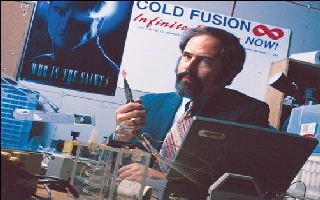
For slain man's family, no arrests
mean no closure
8 months after his death, no
leads in Mallove case
Concord
Monitor - AnnMarie Timmins
"Soon after Eugene Mallove of Pembroke was found murdered in Connecticut,
outside his childhood home, the local police said they had talked to a
couple of suspects and expected to have fingerprint and DNA evidence within
a month. That was eight months ago, and the police said last week that
they are no closer to solving the case. Some of that DNA evidence -
the best hope of tying someone to the scene - still hasn't come back from
Connecticut's state lab. The police haven't recovered any of the items
taken from Mallove, a watch, cell phone and credit cards, said Lt. Timothy
Menard of the Norwich, Conn., police. And despite pleas to the public for
help, no one has called."
Anyone with information about Mallove's death
is asked to call the Norwich Police Department at (860) 886-5561. The anonymous
tip line can be reached at (860) 886-5561, ext. 500.
|
More on Dr. Mallove
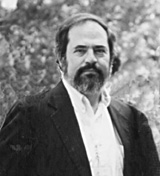
More on Dr. Mallove's Cold Case

|
|
|
Cold
Fusion Gets Chilly Encore - Physics Today - Toni Feder
"Claims of cold fusion are no more convincing today than they
were 15 years ago. That's the conclusion of the Department of Energy's
fresh look at advances in extracting energy from low-energy nuclear reactions.
A report released on 1 December 2004 echoes DOE's 1989 study that followed
the headline-making claims of cold fusion by Stanley Pons and Martin Fleischmann."
[Editor of Cold Fusion Times:
This is not accurate. First, not all 2004 cold fusion
data was reported to the DOE.
Second, eighteen anonymous DOE reviewers “split approximately evenly”
on whether or not there is excess power observed in the cold fusion phenomena.
That is a great change since the 1989 ERAB report.]
"Since Pons and Fleischmann's claims, cold fusion has fallen into disrepute
among scientists, with only a few soldiering on under professional adversity.
Most are funded by industry or various governments."
[Editor of Cold Fusion Times:
This is not accurate. First, more than 3000 scientific papers and
hundreds of researchers have expanded the field enormously. Second,
in the USA most researchers are self-funded. Only in Japan, do industries
such as Toyota and Mitsubishi support cold fusion.]
"Just the fact of the review has heightened the level of discussion.
There's been a huge upswing in interest in funding cold fusion research."
Adds MIT theorist Peter Hagelstein, "A door has been opened by the reviewers.."
More accurate information on the DOE Review
|
JAPAN - The Japanese Thermal
and Electronic Energy Technology Foundation [Toyota], on 12/10/04 awarded
scholarships and recognition to three Japanese scientists for their work
in cold fusion. Dr. Yasuhiro Iwamura (Mitsubishi Heavy Industries), Prof.
Hiroshi Yamada (Iwate University) and Dr. Tadahiko Mizuno (Hokkaido University)
were each awarded research scholarships of 1 M Yen.
Dr. Yasuhiro Iwamura: Nuclear transmutation effects
by deuterium permeation through multi-layered Pd complex.
Prof. Hiroshi Yamada: Excess energy production and
transmutation in PdDx with absorption and de-sorption by electric current
Dr. Tadahiko Mizuno: Hydrogen production from organic
compound liquid by discharge electrolysis
JAPAN - Nikkei-Shinbun (Japanese Financial Times) Connotes Japanese
cold fusion research as the third most important technological trend in
2004
December 27, 2004 - Cited: Mitsubishi Heavy Industry (MHI) cold
fusion work in transmutation (under Dr. Yasuhiro Iwamura) using deuterium
permeation through Pd complexes. It is ranked #3 regarding
important R&D in 2004 in Japan.
"This is a very innovative technology to make transmutation
of elements with low cost, compared to existing methods as fission reactors
and big accelerators." - Nikkei-Shinbun
|
| |
|
|
![]()
![]()
 The
2005 Cold Fusion Colloquium
The
2005 Cold Fusion Colloquium





